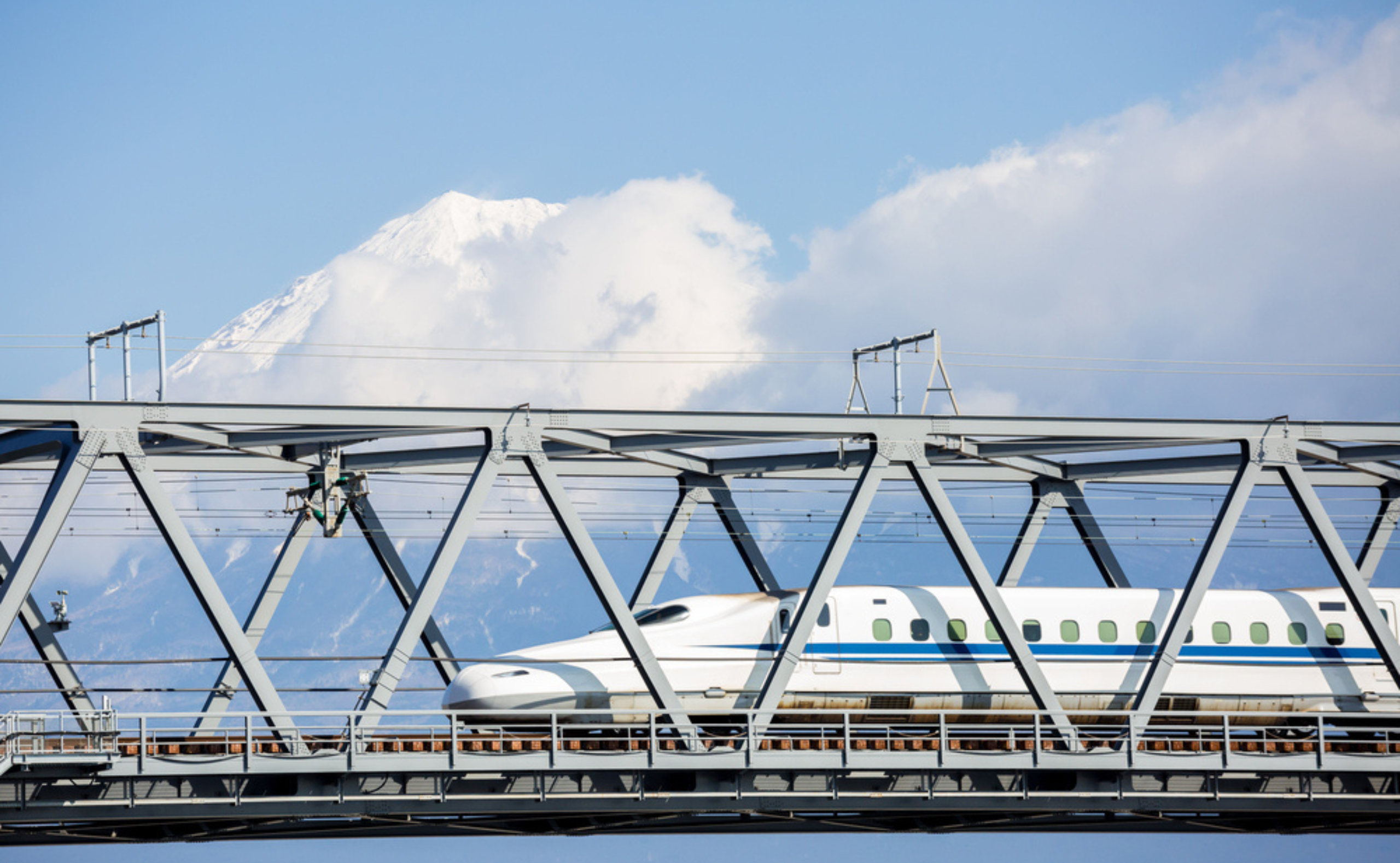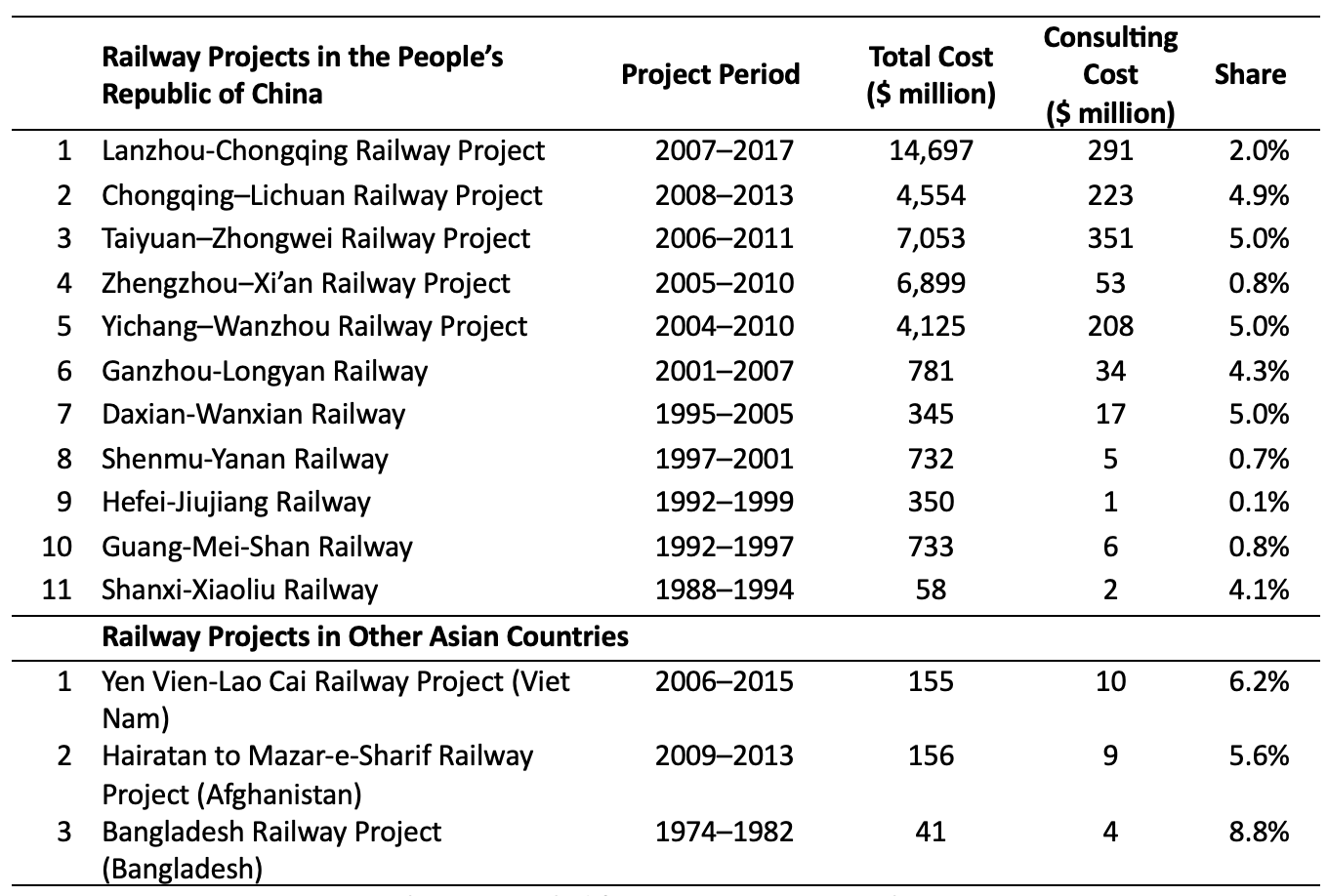
The development of “quality infrastructure” that is sustainable and promotes inclusive development has become a driving force of economic growth (Vivek et al. 2023). However, current global challenges and their socioeconomic impacts are undermining the potential for new private sector investment in developing Asia, where demand for new infrastructure projects is high. The question is: How can the region meet its infrastructure needs while securing investment to support project growth within the sector? In fact, some reflection shows that the answer lies within.
Learning from Japan’s infrastructure development experience
It is helpful to look at how Japan overcame social, environmental, and institutional challenges to meet its infrastructure needs and build up its national transportation network—including its first high-speed rail (HSR) lines and highways—to achieve rapid economic growth after World War II. In 1952, at the close of the Allied occupation, Japan was a “less-developed country,” with per capita consumption roughly one-fifth that of the United States (US). The US invested $2.2 billion in Japan’s reconstruction effort between 1946 and 1952 under international cooperation, and a large portion of this was channeled to support infrastructure development. At the same time, Japan rolled out its post-war economic development plan, the national highway network called the “Pacific Belt Corridor.” The corridor included various fundamental infrastructures, including the Tokaido Shinkansen—the world’s first HSR.
In addition, Japan developed new technologies and construction methods that allowed for faster and more efficient highway and HSR construction. New infrastructure was planned after the 1990s when the Japanese economy stagnated—the Linear Chuo Shinkansen connecting Tokyo, Nagoya, and Osaka, with a linear motor car maglev that will shorten travel time from 1 hour 40 minutes for the Tokaido Shinkansen down to 40 minutes for the new Chuo Shinkansen. This is expected to revitalize the Japanese economy and supplement the aging Tokaido Shinkansen as a second route in case of a large-scale disaster.
Overall, Japan’s national transportation network was developed through a combination of government investment, international cooperation, planning and design, public–private partnerships, technological innovation, and public support. It has demonstrated a perfect example of developing infrastructure to meet social, economic, and environmental needs. Yoshino and Nakahigashi (2000) conducted a study on the case of Japan and found statistically significant results supporting the positive role of infrastructure investment. The network has played a crucial role in supporting Japan’s economic growth and connecting its people and goods across the country.
Capacity building for cost saving: Railway cases in the People’s Republic of China
A shortage of infrastructure financing sources is an obstacle for many developing Asia countries. The People’s Republic of China (PRC), which has experienced rapid infrastructure development in the past few decades, has demonstrated a solution for cost saving.
We investigated the consulting cost of railway projects in the PRC that were co-financed with the Asian Development Bank (ADB) (Table 1). The preliminary findings show that the costs allocated for consultants for project implementation comprised a relatively low percentage of the whole cost, compared with similar projects in other countries, and the share is decreasing over time as shown in Figure 1.
Table 1. Consulting Cost Share of Railway Projects
 Source: Authors, compiled from ADB project completion reports.
Source: Authors, compiled from ADB project completion reports.
Figure 1. Consulting Cost Share of Railway Projects
 Source: Authors, compiled from ADB project completion reports.
Source: Authors, compiled from ADB project completion reports.
According to the statistics from the China National Association of Engineering Consultants (CNAEC), by the end of 2007, there were about 20,000 engineering consulting firms with a total of 2 million employees. However, 8 years later, in 2015, the numbers surged to 34,000 firms and 3.5 million employees. Capacity building and training of the workforce, especially the growth of domestic consultants for project design and construction supervision, contribute have contributed significantly to PRC’s development. Nowadays, the PRC is positively exporting its domestic consultants’ expertise through initiatives such as the Belt and Road Initiative.
Prioritizing infrastructure amid limited financing sources: HSR development in India
Prioritizing infrastructure projects in Asia per each economy’s socioeconomic needs is one way to solve the tradeoffs between huge infrastructure demand and scarce finance sources, particularly for developing countries. India appears to be prioritizing road and rail transport, including HSR development. This can be seen in Figure 2, which illustrates the relationship between population density and GDP per capita in the commencing year of HSR. Two groups can be identified, as separated by the blue and red lines. For European countries and the US, higher GDP stimulated the start of HSR (the blue line), while for Asian countries, a large population density was the foundation for HSR investment (the red line).
Figure 2. Relationship between Population Density and GDP per Capita in 2005
 Source: Nakamura et al. (2019).
Source: Nakamura et al. (2019).
India, whose total population surpassed that of the PRC in 2023 (World Population Review), is perfectly located on the red line, confirming the country’s suitable timing for HSR development, with the Mumbai–Ahmedabad High-Speed Rail Corridor already under construction. HSR development is widely deemed to have critical development impacts, providing fast connectivity and reductions in fuel consumption, with many more spillover effects to be explored.
Self-help for the road ahead
In the post-COVID-19 pandemic era, the need for a timely rebound in infrastructure development is more urgent than ever. Asia’s project experiences and lessons learned offer a useful guide for onward quality infrastructure growth in the region and beyond. It is time to review and follow case studies and best practices on infrastructure development for enhanced connectivity, quality, resilience, and sustainability.
References
Nakamura, H., K. Nagasawa, K. Hiraishi, A. Hasegawa, KE Seetha Ram, C. J. Kim, and K. Xu. 2019. Principles of Infrastructure: Case Studies and Best Practices. Tokyo: ADBI.
Yoshino, N., and M. Nakahigashi. 2000. Economic Effects of Infrastructure: Japan’s Experience after World War II. Special Issue: Infrastructure for Development in the 21st Century.
UNDP (n.d.). COVID-19: Socio-Economic impact. UNDP.
Vivek, R., G. Stefano, C. Francesca, and P. Mattia. 2023. Rethinking Infrastructure Financing for Southeast Asia in the Post-Pandemic Era. Manila: ADB.
World Population Review (n.d.). Total Population by Country 2023.









Comments are closed.